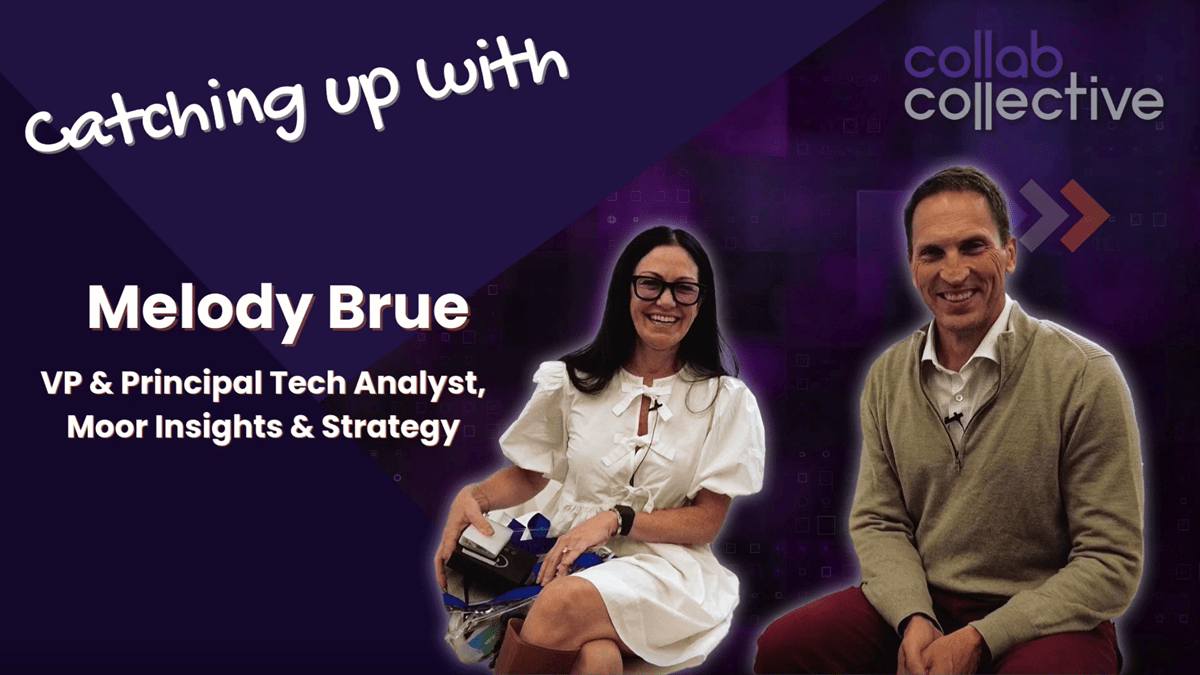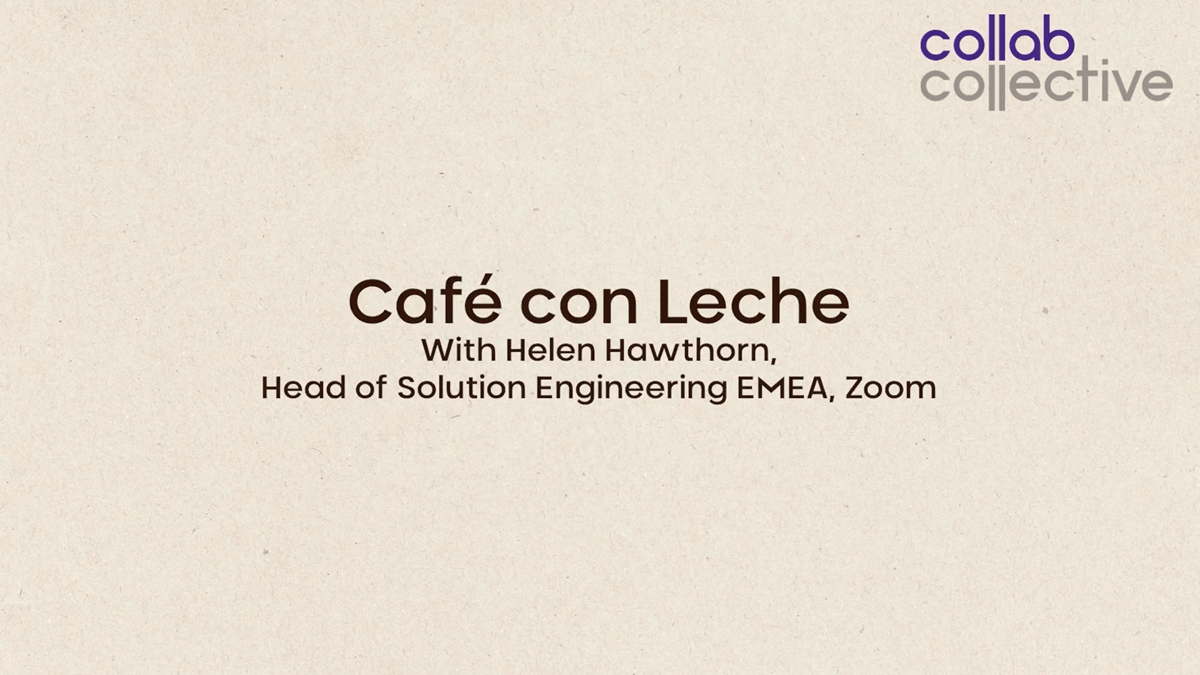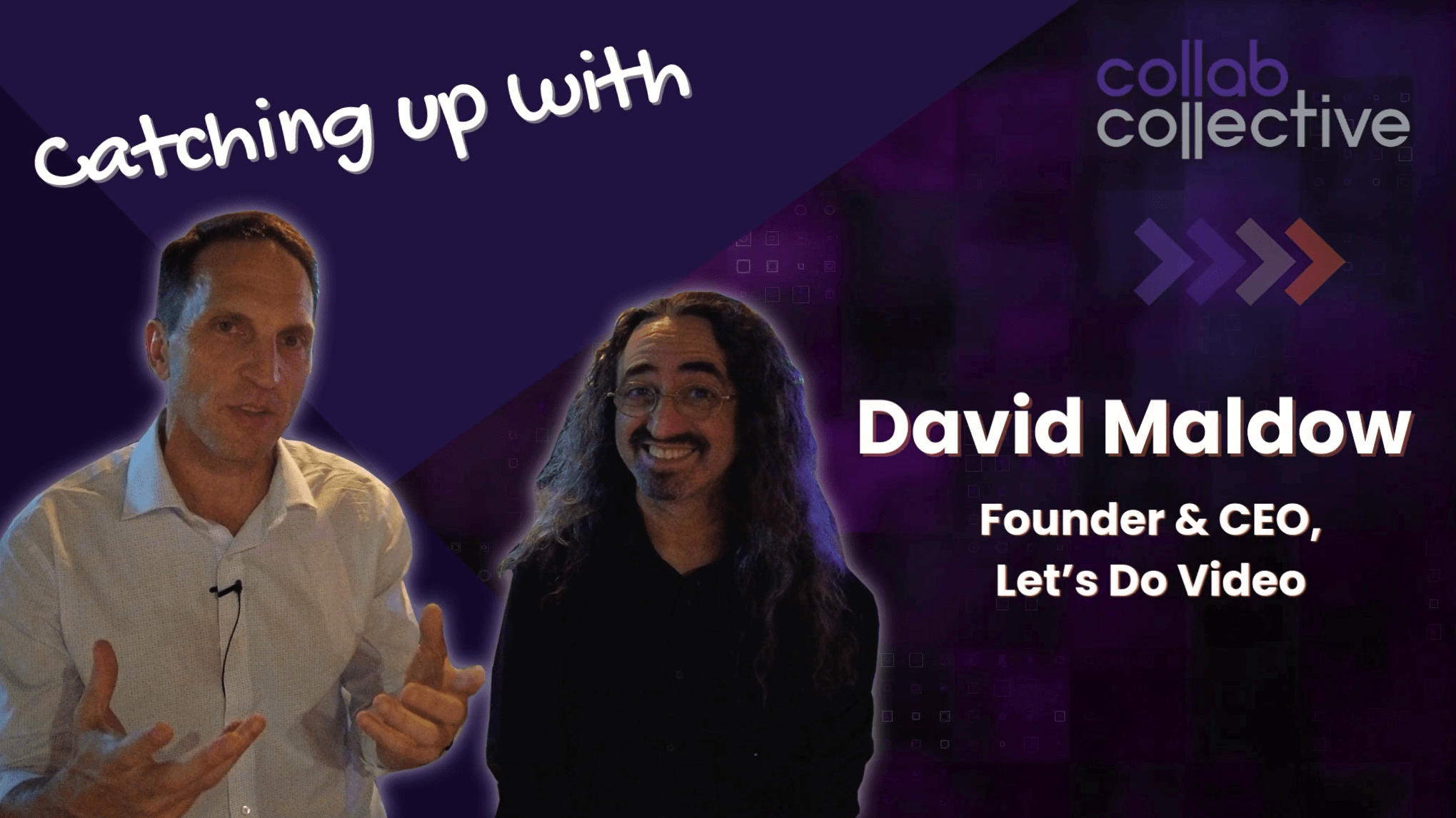Catching Up with Nick Tidd at Zoom Perspectives

Summary
In this episode of Catching Up with, the Collab Collective's Craig Durr sits down with Nick Tidd, Head of Global Channel Go-to-Market at Zoom, during the Zoom Perspectives analyst event. With nearly a year in the role, Nick shares how he’s helping reshape Zoom’s channel strategy—from streamlining quote-to-cash systems to introducing new partner programs that better support diverse routes to market.
Their discussion covers:
- Four Pillars of Channel Growth: Transforming systems, accelerating channel operations, simplifying programs, and building for scalable growth
- Frictionless Tools & Automation: How new quoting and provisioning tools are reducing turnaround time from days to seconds
- Expanding Routes to Market: Why Zoom is embracing resale, agency, marketplace, and service provider models
- Zoom Up Partner Program: Plans to tailor partner benefits across distinct routes with global alignment
- Looking Ahead to Zoomtopia: What’s next in enablement, training, and changing the perception of Zoom beyond meetings
Subscribe Here!
Transcript
Craig Durr: Hey everyone, this is Craig Durr, Chief Analyst and Founder of the Collab Collective. I am here at Zoom Perspectives–this is an analyst-only event put on by the executive staff and analyst relations team at Zoom. What takes place here? This is where the Zoom team has an opportunity to educate us on the strategy and the ideas they have moving forward for the next year or so. This particular event was really insightful, but there was one part that really caught my eye, and I wanted to pull aside someone to talk about it with, and that would be my good friend, Nick Tidd.
How are you? Good to see you. Nick, remind me of the title.
Nick Tidd: Head of Global Channel Go-to-Market
Craig Durr: I got the words mixed up, but we got it right. Now, you and I actually have history. We've worked together in the past at Polycom, HP.
Nick Tidd: We have a lot of history.
Craig Durr: We do. You've actually worked in the channel space for…
Nick Tidd: Do you really want me to… you will really want me to age myself?
Craig Durr: We're not gonna…
Nick Tidd: I've been doing this for a long time.
Craig Durr: What I'm trying to get at is the fact that you actually have a lot of experience in what's taking place, but it's mostly been on the hardware side for a while, right?
Nick Tidd: It has, but always been in unified communication. And so, that UC background, way back from the early days at U.S. Robotics and 3Com, really has come full circle. But to have an opportunity to represent a tremendous brand and as a channel leader, you really look for four attributes: tremendous brand, phenomenal product portfolio, an aptitude to want to embrace the channel, and the financial ability to be able to do what we need to do. All make for very good ingredients for success.
Craig Durr: I think you have a really good recipe right now.
Let's give context and history. So you've been in this position for about 11 months now. You actually, you and I actually visited Zoomtopia last year, and that's about within the first four or five weeks of the position that you had it.
Nick Tidd: It was actually three weeks.
Craig Durr: Okay, that's what it was. And then we saw each other again at Barcelona, at ISE, and that was kind of a midway checkpoint. And at this event, you actually had a chance to unveil some of the great work you've been doing. It's been really impressive. What I like about it is you have a really clean strategy in place, and I think you've been able to execute it well. Help me understand this–can you outline, as a channel go to market strategy, four key elements or four key groups you want to talk to. Can you share those four groups that Zoom wants to work with?
Nick Tidd: Sure. So with the experience comes practicality and understanding that our partners have a choice to whom they want to partner with. They have their businesses to run, and so you've got to be able to be transparent with them. You've got to lay out a foundation for change. And so we laid out four pillars that essentially were around transforming our systems and tools, accelerating channel within Zoom, laying out and simplifying a partner program, and laying out a foundation for growth strategies.
Craig Durr: So that they grow with you as well.
Nick Tidd: They grow with us as well, but they're able to embrace the change with us because, as I started very early on, there was no shortage of passion, no shortage of… “Hey, let me tell you what I think you need to do.” We laid out that foundation. And what was remarkable as I was going through my orientation, I'll call it orientation with the channel, like “You know, we've heard this from Zoom before. We've heard this year on the channel, let's sit back and watch this.”
Craig Durr: A lot of like, “Let's see the proof first.”
Nick Tidd: Let's see the proof. Here we are, 11 months later, and with tremendous support from the leadership team at Zoom and from our channel community. We're literally checking the boxes off, and one major pillar was transforming our systems and tools. We were challenged with how we supported our channel community in quoting, how we were provisioning orders, the complexity of our pricing and our pricing programs. And so in May, we introduced a suite of new quote-to-cash tools.
Craig Durr: And you shorten the time.
Nick Tidd: We did. We did that in seven months.
Craig Durr: So if I'm a partner, and I go into the partner portal, and I'm going quote-to-cash at the point in time that I would input my information and get my quote back out, you've actually taken that turnaround time and shortened it phenomenally.
Nick Tidd: So the quote turnaround time–absolutely, but our provisioning is where our direct partners have seen a tremendous improvement. When we announced, I had a couple of partners call and say, “Is there something wrong?” I'm like, “What do you mean?” “This used to take me a much longer period of time to now, we're down to less than a minute.” And so when you take out friction–friction has been inhibiting us from opportunity–from there, we've looked at our partner tools relative to the partner portal. We're doing a UI, UX refresh next week, we've enhanced our partner demand center, where we've now got campaigns for partners through and to mark.
So part of what I heard at Zoomtopia for our partners, and this is what excites many of us at Zoom and also our partner committee, is the velocity of which we release products. And one of the stats at Zoomtopia was 3,000 new features. And our partners went, “How do I keep up with this?” And so we've got to be more effective in creating campaigns and putting campaigns in a box. It allows our partners to put together packages around marketing and demand gen campaigns.
So as we continue to evolve our channel programs, an attribute of what we need to accomplish is we need to be available to where our customers want to purchase products. And so we've clearly articulated that we are going to support the resale channel, we're going to support the agency channel where appropriate around the world, we have embarked on a marketplace strategy where we now have been transacting with Amazon Marketplace domestically in the United States.
Craig Durr: So people can utilize, or the credit quotas they have…
Nick Tidd: We're evolving that model to incorporate where end customers want to retire their commit spend through our two routes to market. We're going to enable that. The third part of that is also a service provider strategy, and that service provider strategy is sell-through service providers, as well as hosted platform providers. So as you build out the routes, you've essentially got resale, agency, service provider, marketplace in addition to Zoom's online business. So we really have five routes to market so that we're available. And then from there, it's how you build out partner programs to support that, so we now are evolving the Zoom Up Partner Program.
Craig Durr: Now tell me what that is.
Nick Tidd: So that Zoom Up Partner Program today is where you have benefits and where we accreditate partners, and how we measure partners. Today, we're in a single, what I'd call a single partner program. We're going to break that apart and recognize those four distinct routes to market, and the characteristics that go with each, and then understand that you have different partner types within those four routes to market, and how we address that. And that'll be a global footprint, so you'll see that coming out later on in the year.
Craig Durr: You know, what was amazing is that in your update, and I'm not sure if you can share some of these indicators of success, you had some good numeric indicators of success, number of partners program, for example.
Nick Tidd: So there's a couple of things I look at as I measure the number of indirect transacting partners with us, and what's interesting is we've seen a continued increase in the number of indirect transacting partners, and yet, we haven't rolled out our new partner program. We're introducing new tools, so it's a testament to the success of the product portfolio and our ability to attract more resellers, the contribution of pipeline to the company, and that helps us jointly sell to those end users where they want to buy. And it helps us continue to transform the company from a direct to an indirect model because when you're working in tandem with your partner community, and supporting them with high touch resources, those are the measurement criteria that I look at on a daily basis, as indicators of success of moving to an indirect model.
Craig Durr: All right. So here we are now. We're about four to five months away from Zoomtopia? What are you hoping to share? Yeah, I know you can't go into big details, but around the Zoomtopia timeframe, what do you hope to have in market at that point in time? Or what's the next steps?
Nick Tidd: I think you're going to see us continue to iterate on the program elements themselves. We've laid out, and I most recently was in Bangkok last week with our advisory council of our APAC partners and shared with them and asked them to validate. We need to do a lot in the areas of enablement. We need to do a better job in training, we need to do a better job in communication, and we also need to create an environment for our partners to be able to get access to our technology, to be able to do proof of concepts, to be able to do pilots. So they're helping set the stage to our earlier part of conversation, which is you can't throw everything at it at once because you'll just overwhelm everybody. And so it's laying out that continuum of a strategy that's important.
So at Zoomtopia 2025, you'll see us continue to iterate on that strategy. We've been challenged in the marketplace by a number of our partners saying, “Please get the message out that you're more than a meetings company.” That the breadth of the portfolio is one of the most exciting elements. If you've seen the latest Forrester document and had us moving up to best in class and various other data points–that has to help us change the perception that we're more than just meetings.
Craig Durr: I think so. I think you're getting the feedback. I think you're getting the feedback that this is almost a product-led experience in a lot of ways, when people discover that process.
All right, so October–we'll have an update, I think, in Zoomtopia. You and I can sit down again; we can talk about where your golf handicap is, if it's improved
Nick Tidd: It'll be in September, not in October.
Craig Durr: Oh, I'm sorry–September. Let's get that right. It's September, right. But we'll talk about the golf handicap then, right?
Nick Tidd: And as it continues to go up, yes,
Craig Durr: That means you're executing on your plan.
Nick Tidd: The only handicap that's going up is the amount of airline points that I'm accumulating on United Airlines.
Craig Durr: All right, thank you so much for your time. I appreciate it. Everyone, this is Craig Durr from the Collab Collective. Take care.



